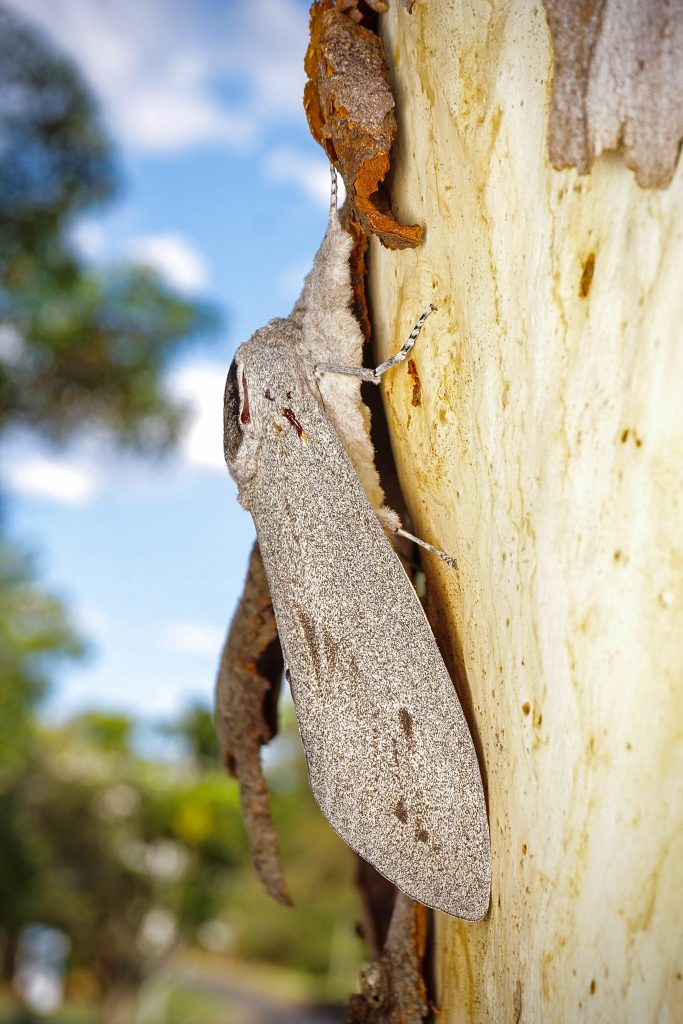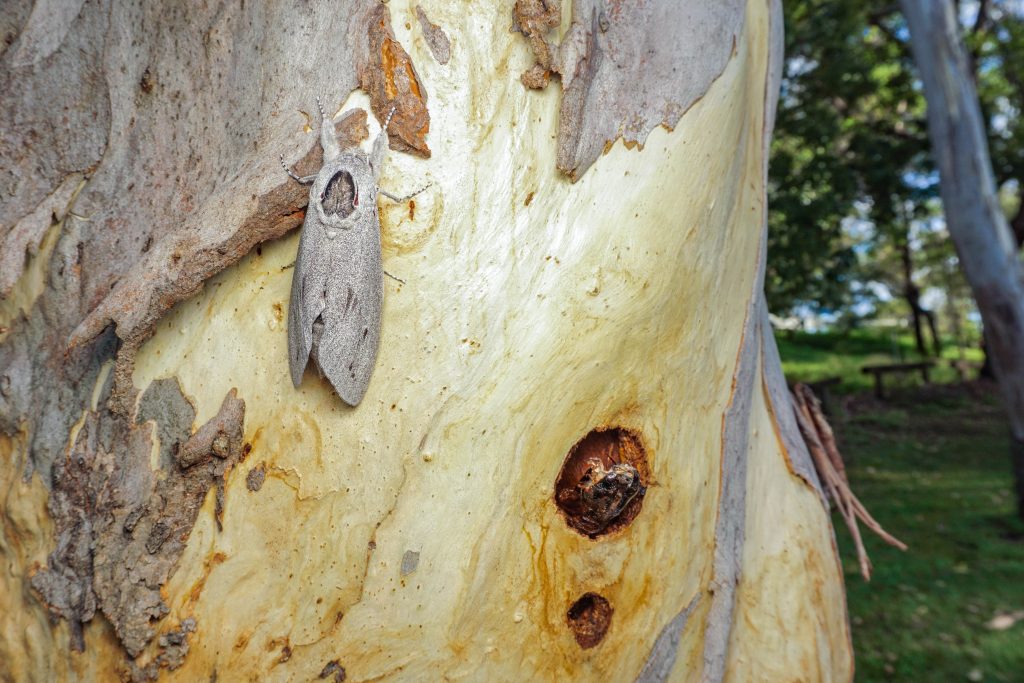
The start of the summer rains is paired with holes appearing on the trunks and branches of smooth-barked eucalyptus trees. These holes, which are always found in pairs, expose the tunnels of the giant wood moth (Endoxyla cinereus), a species which is common along the east coast of Australia, but seldom seen.
After feeding on the cambium layer of a eucalyptus tree for 1-2 years, caterpillars of this giant moth are ready to pupate. But before they can, they must form an escape route from the tree for their adult selves. This is when the caterpillars chew a large exit hole in the tree, roughly 3cm wide. In case of rain entering this hole and filling up the chamber inside, the caterpillar also clears out a smaller hole below. This smaller hole is where the caterpillar initially entered the tree, years before. With an escape route in place, the caterpillar then will create a protective barrier to keep itself safe while it pupates inside the tree. This includes a sticky webbing, coated in a mucilaginous excretion. It lines the entrance to its pupation chamber with this repellent web, then plugs itself off from the rest of the world with a pellet made of silk and compacted strips of wood. Once it is safely sealed away, it will pupate by shedding its larval skin and then remaining, relatively motionless for ~60days.
During the peak of summer (late November – January), these moths will finally emerge from their hidden chambers. The pupa first dislodges its plug, pushes through the revolting web, and inches its way out of the exit hole. Once it is half-exposed in the exit hole, the moth will flex its flight muscles from beneath the pupal skin until it breaks the skin and a few legs escape to pull the rest of the moth out. The grey moths emerge from their pupal skins with crumpled wings, but they soon expand these and dry them on the trunk of the tree.

The adult moths have no mouths and therefore live on their stored fats. They do not need much time in this stage, as they only seek to mate and then lay thousands of eggs. This short adult period, when the moths are exposed to the rest of the world, has left people shocked whenever they encounter this gentle giant as they have never seen it or heard of it before. You might be lucky enough to spy the holes of these moths from September to January, and if you are very observant, you may spy one emerging from their tree!
Jessa Thurman
Further reading:
Thurman, Jessa H. “Beyond the pest: Life history, ecology and ethnoentomology of the giant wood moth (Endoxyla cinereus).” (2022). Austral Ecology, 47(4): 733-747.

Giant Wood Moth (Endoxyla cinereus) and paired holes – photo Jessa Thurman
Wildlife Matters is published in:


